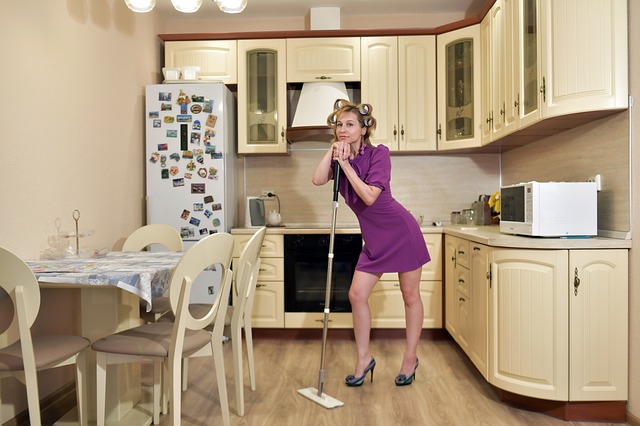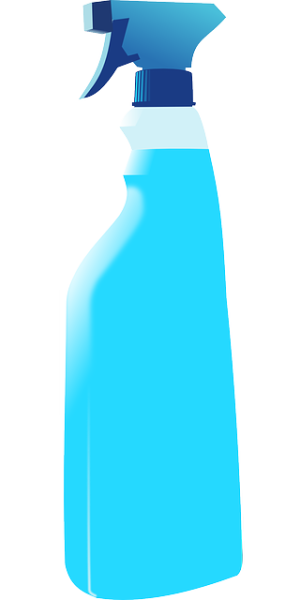Regular deep cleaning is essential in high-traffic public areas like malls, hubs, and offices to maintain safety, hygiene, and appeal. Targeting problem areas, frequent disinfection of touchpoints, and addressing intricate layouts are key strategies. Essential tools include vacuum cleaners, floor scrubbers, microfiber cloths, all-purpose cleaners, and protective gear. A structured approach involves clearing obstacles, vacuuming, mopping hard floors, sanitizing walls and fixtures, and disinfecting surfaces. Focus on high-touch areas like handrails, doorknobs, buttons, and tables with appropriate solutions and disinfectants. Schedule cleaning during off-peak times, use temporary partitions, and maintain consistent deep cleaning routines (weekly/bi-weekly) for optimal results.
In high-traffic areas, regular deep cleaning is essential for maintaining hygiene and health. This comprehensive guide explores strategies tailored to intense footfall zones like retail stores, offices, and public transport hubs. We’ll delve into understanding common spots and challenges, the significance of frequent deep cleaning, and necessary tools.
Learn effective steps for deep cleaning these areas, from surface disinfection techniques to minimizing disruptions. Discover scheduling tips for a consistent routine, ensuring environments remain safe and clean for all.
Understanding Heavy Traffic Areas: Common Spots and Challenges

In the bustling landscape of public spaces, heavy traffic areas are a vibrant yet demanding part of daily life. These high-traffic zones, such as shopping malls, transportation hubs, and office buildings, face unique challenges when it comes to cleanliness and hygiene. Regular deep cleaning is essential to maintain these environments, ensuring they remain safe, sanitised, and inviting for all visitors. Common areas like escalators, handrails, and floors often bear the brunt of footfall, accumulating dirt, grime, and bacteria over time.
Identifying these problem areas is crucial in developing effective deep cleaning strategies. For instance, high-touch surfaces require frequent disinfection to prevent the spread of illnesses. Additionally, the layout and design of spaces can impact cleanliness; labyrinthine corridors or hidden corners may be overlooked during routine cleaning, necessitating specialised attention for a thorough deep clean.
The Importance of Regular Deep Cleaning for Health and Hygiene

Regular deep cleaning is paramount in maintaining a healthy and hygienic environment, especially in high-traffic areas. Such spaces, from busy restaurants to bustling offices, can quickly accumulate dirt, bacteria, and viruses, posing potential health risks to occupants. Deep cleaning involves more than a surface scrub; it entails removing layers of grime, disinfecting hard surfaces, and addressing often-overlooked areas like baseboards, air vents, and doorknobs.
This rigorous process plays a vital role in preventing the spread of infections and ensuring a safe space for everyone. In the context of heavy traffic, where people frequently touch and interact with shared spaces, regular deep cleaning acts as a defense mechanism, creating an environment that is not just clean but also sterilized, thus promoting overall well-being and reducing the risk of disease transmission.
Essential Tools and Supplies for an Effective Deep Clean

Deep cleaning heavy traffic areas requires a well-equipped toolkit to ensure optimal results. Essential tools and supplies include a powerful vacuum cleaner designed for high-traffic spaces, as it efficiently removes deep-seated dirt and debris. Additionally, a heavy-duty floor scrubber with adjustable settings is vital for tackling tough stains and grime. Microfiber cloths and brushes come in handy for detailed cleaning of corners and crevices, while an industrial-strength all-purpose cleaner is effective for various surfaces. Don’t forget protective gear like gloves and masks to safeguard against harsh chemicals.
For deep cleaning, a pressure washer can be a game-changer, particularly for outdoor areas. It swiftly eliminates stubborn dirt and grime from concrete, brick, or wooden floors. An additional must-have is a reliable mop with replaceable heads, perfect for quick and thorough wiping down of large surfaces. These tools, combined with proper techniques, ensure an effective deep clean, leaving heavy traffic areas sparkling and hygienic.
Step-by-Step Guide to Deep Cleaning High-Traffic Zones

Deep cleaning high-traffic zones requires a systematic approach to ensure every nook and cranny is thoroughly sanitized. Start by clearing all furniture, equipment, or any obstructions from the area. Next, vacuum thoroughly to remove dust, debris, and loose dirt. For hard floors, use a suitable cleaning solution and a mop to deep clean, paying close attention to high-wear areas. Don’t forget to wipe down walls, doors, and fixtures – these often accumulate grime and bacteria.
Move on to disinfecting surfaces using a reliable disinfectant spray or wipes, focusing on frequently touched items. Let the disinfectant work for the recommended time before rinsing or wiping clean. For fabric or upholstered furniture, vacuum and spot clean as needed. Regularly launder linens and cushions to maintain hygiene. Lastly, don’t overlook air filtration and ventilation – keeping the area well-ventilated aids in removing any lingering cleaning chemicals and improves overall air quality.
Strategies for Disinfecting Surfaces in Public Spaces

Deep cleaning and effective disinfection are essential strategies for maintaining public spaces, especially in high-traffic areas. The approach should focus on surfaces that see frequent contact, such as handrails, doorknobs, lift buttons, and tables. A robust deep cleaning routine involves a multi-step process starting with the removal of visible dirt and debris using appropriate cleaning solutions. Once the surface is clean, a suitable disinfectant is applied to kill germs and bacteria.
For public spaces, it’s recommended to use disinfectants that are effective against a wide range of viruses and bacteria, following manufacturer instructions for application and contact time. Regular cleaning schedules should be established, considering high-touch surfaces that require daily or even hourly attention, depending on the area’s footfall. This proactive approach ensures a clean and safe environment, promoting public health and reducing the risk of disease transmission in shared spaces.
Tips to Minimize Disruption During the Deep Cleaning Process

To minimize disruption during deep cleaning heavy traffic areas, it’s crucial to plan ahead and communicate openly with building occupants. Schedule deep cleaning during off-peak hours when foot traffic is minimal. This allows for less interference with daily routines and ensures a more comprehensive clean. Clearly communicate the process and expected delays in advance, providing ample notice through emails, signs, or announcements to foster understanding and cooperation from all parties involved.
Implementing temporary solutions can also help maintain functionality during deep cleaning. Consider setting up portable partitions to reroute foot traffic or using storage boxes to move items out of the way. These measures can prevent obstacles and allow for access to all necessary areas without causing significant disruptions, resulting in a more efficient and less stressful clean.
Scheduling and Maintaining a Consistent Deep Cleaning Routine

Maintaining a clean environment in high-traffic areas is essential for both health and aesthetics. To ensure optimal results, deep cleaning should be scheduled regularly, ideally on a weekly or bi-weekly basis. Consistency is key; regular cleaning routines prevent the buildup of dirt, grime, and bacteria that can cause damage to surfaces and pose health risks.
A well-planned schedule involves targeting specific areas each session. For instance, start with high-touch surfaces like doorknobs, light switches, and tables, followed by floor cleaning and finishing with disinfecting hard surfaces. This systematic approach ensures every nook and cranny receives the attention it needs. By adhering to a consistent routine, you can create an inviting and safe space for everyone.
